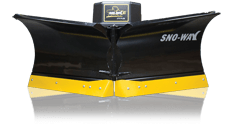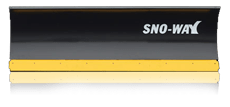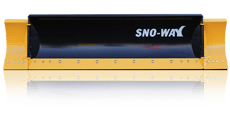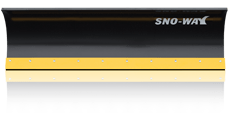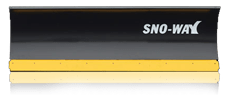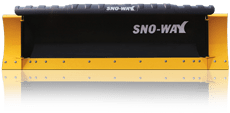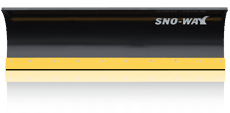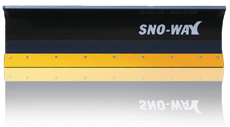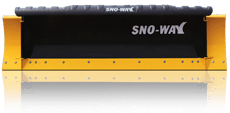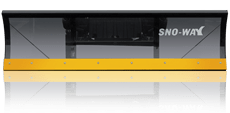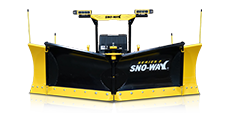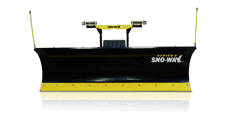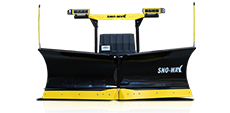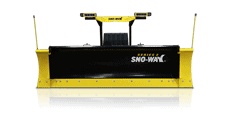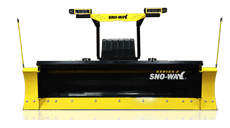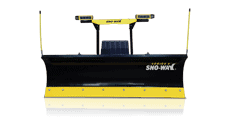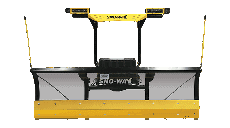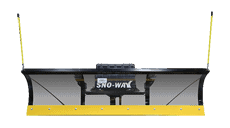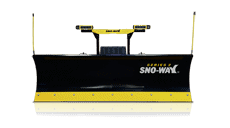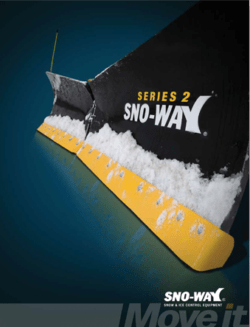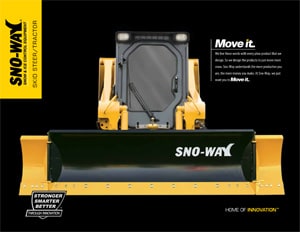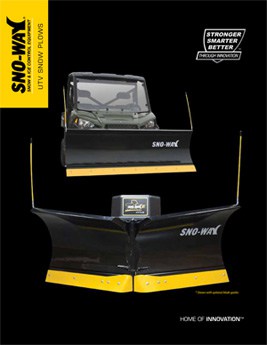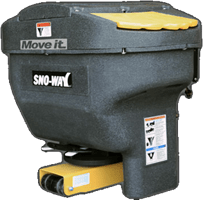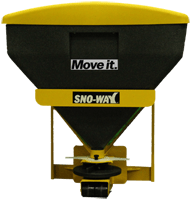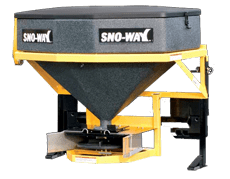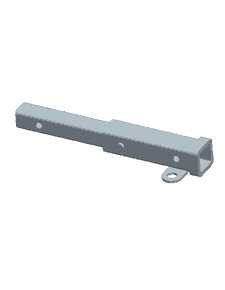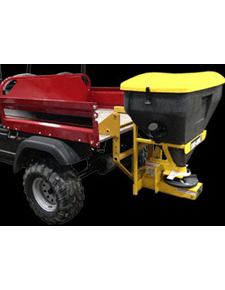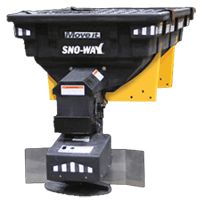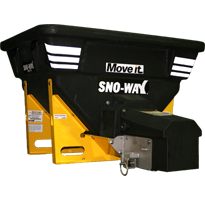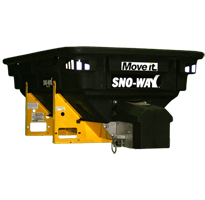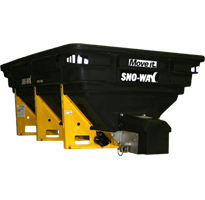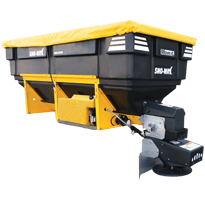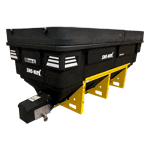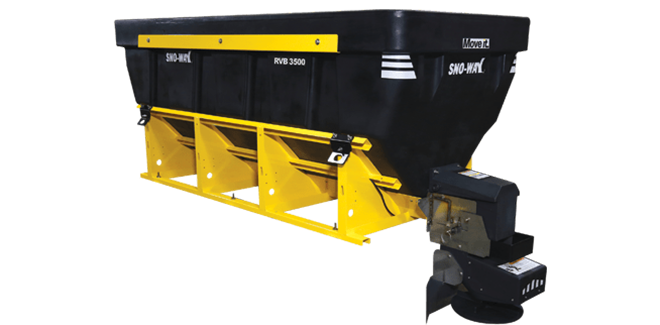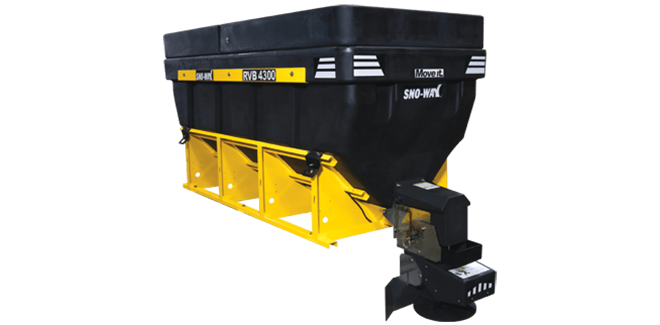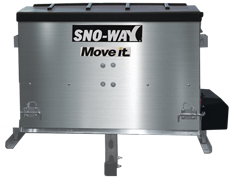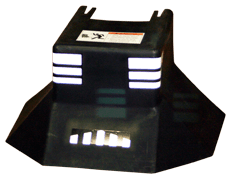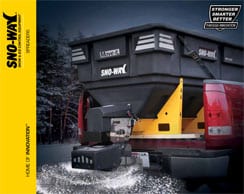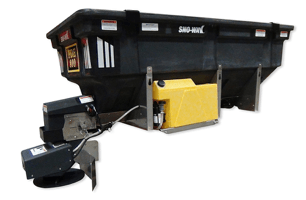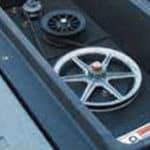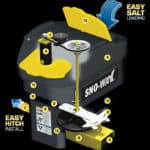In this blog I am going to continue writing about our PDE Spreader line. Last time I focused on the new PDE Controller, this time we will dig into the PDE Spreader.
Combining the spreader with the new controller we now have an auger spreader that can handle a large range of materials. Some of the materials that we have successfully spread are bulk salt (dry and wet), quarry sand (dry and wet), mason sand, salt/sand mix, magic salt, calcium chloride, pea gravel and bagged salt.
The short chute or long chute is an easy on/off connection with spring loaded clips. This feature allows you to remove the chute to quickly unload remaining product in the spreader or pull a trailer with the spreader left in the bed of the truck.
We changed our wiring harness so that we now have one harness that supply’s all of the power to the spreader from the battery with a water tight Duetsch connector with a seal to connect to the hopper. The harness on the hopper is fully wired so as you add accessories like the vibrator, light, or wetting system no cutting or splices are needed, just plug and play and you are ready to operate the accessories.
We were able to continue to build upon our patent pending inverted vee system. By adjusting the inverted vee to match the material you want to spread you now can spread all the materials I mentioned, plus more materials that we are still testing. With the inverted vee adjusted correctly we can maintain a flow rate between 2 to 3 cubic feet per minute of output. If you want more output on salt we can increase the output to 4 to 6 cubic feet per minute. This can be accomplished because we have a smart controller with an inverted vee control system in the hopper and the best spread pattern in the industry.
We manufacture the spreader in three sizes ½ yard, ¾ yard, and 2 yard capacity. This spreader was designed with the professional user in mind; we added many features and benefits that will make life easy for the user. The rotor molded perimeter hopper with ribbed sides mounted to a stainless steel frame gives the unit the structured needed to with stand the loads the unit will be subject to when the unit is in use. We designed the unit to have stainless steel cross supports on top of the hopper to attach the screen and the hold down brackets. By adding this bracing you will not put added stress on the hopper body when you tie down the spreader to your truck. This system will eliminate the bowing out of the sides of the hopper that you notice on some units that mold the hold down brackets into the hopper.
The shape of the spreader hopper is designed to promote the high flow of material that is put inside of the spreader. The angle of the side helps material flow into the auger for a smoother, consistent, output from the spreader. The ½ hp motor/gear box that turns the auger is sized to handle the load that the spreader requires. The motor gear box is mounted in a protected molded cover to reduce the chance of damage and protect the motor from the elements. The 1/3 hp motor that turns the spinner is mounted inside of a molded cover to help protect it from the elements.
The auger is 3 inch in diameter to deliver approximately 2 plus cubic feet per minute of material to the spinner. That flow can be increased by adjusting the inverted vee to allow more material on to the auger. Our inverted vee system is unlike anyone else’s system because it’s fully adjustable. That being said the system can be adjusted so you can allow more material to flow into the auger. An example would be using sand as your spreading material, because of the way that sand tends to pack together, it is very important to have the inverted vee and the baffle on the inverted vee opened up. This setting will promote the sand to flow onto the auger and the auger can deliver a consistent amount of material onto the spinner for discharge onto the surface. If you need to flow dry bulk salt, you would need to close off some of the baffles and adjust the inverted vee to reduce flow to the auger, again this is done to promote consistent output to the spinner. At the end of the day this system will save you time and material which we all know is money in the bank.
The vibrator system we use can be either one vibrator or two vibrators mounted on the spreader. The vibrator unit or units are placed in locations on the spreader that will have the biggest impact on the material you are trying to flow.
We added holes in the stainless steel leg supports, which you can use to attach 2” x 6” wood boards so you can have the spreader centered and stabilized in the box of a pickup truck if that is where you mount the spreader.
Another feature we have built into the spreader is the ability to use an auger tool on the end of the auger in case the auger gets over loaded. If the auger gets over loaded you can attached the auger tool and use a power tool to drive and rotate the auger, hopefully this will free up whatever was causing the auger to be overloaded and you can go back to spreading material.
If you just want to do maintenance on the spreader, we have designed the spreader to allow you to remove the auger completely from the spreader, by removing a few plates and sliding the auger out of the end of the spreader. This makes servicing the auger, bearings, auger motor and the trough very easy to maintain which always promotes people to do maintenance more regularly.
You can add an optional vinyl tarp to cover the top of the hopper, this vinyl cover has fastener to attach it directly to the hopper. This makes it very easy to roll up and out of the way by attaching straps that are integrated to the system. This allows you to keep the tarp attached to the spreader but out of the way when not in use.
The unit comes standard with a top screen to keep large clumps of material or rocks from getting into the hopper. This will help prevent the large clumps of material or rocks from jamming the auger system and stopping the material flowing to the spinner.
One of the big advantages of having an electric dual poly spreader with an auger drive is the reliability and the maintenance of the unit. On the maintenance side there is just less that can go wrong. First we eliminate the gas motor that you must keep running hoping that it starts when it is cold. Then you have the gear boxes that like to break and now you need to replace it, so you get out your torch to heat things up, hoping you can break loose the rusted fasteners so you can replace the gear box. (I have had the pleasure of having to replace a gearbox on a cold day when I need the spreader usually a six hour job.) Then you have the drag chain that breaks or rust tight over the summer and you either need to repair or replace the chain so you can get the spreader to work again.
Let’s not forget the salt that we put into these spreaders that attacks any metals that are used in the spreader when it is manufactured, after a few years of use it is one big rust bucket. On the reliability side of things all of the things I mention can and will happen if the maintenance is not completed with the utmost of care. With the poly hopper you do not have the concern about the salt attacking the spreader body and we put the electric motors and drives inside poly covers to keep them protected from the salty environment that they work in. One last thing that I feel is an benefit is with electric motors is when I am out at four in the morning spreading salt I am not waking up the neighborhood with the noise that the gas motor makes when it is running and I am spreading salt.
Please view our videos at www.snoway.com to see all the different materials we have tested. If you have a material you would like us to test email us at info@snoway.com.
Terry Wendorff
President


